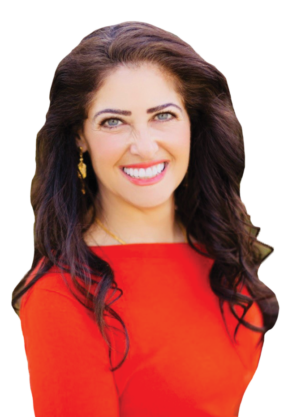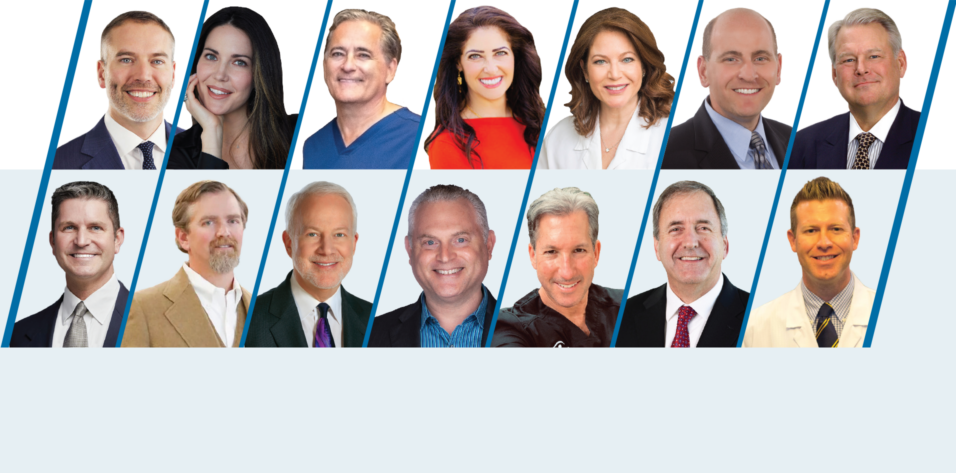Companies: HIPAAChat, LifeLong Vision, MetaMed
Clinical Practices: Bascom Palmer Eye Institute, Miami, and Stanford University School of Medicine, Palo Alto, California
Claim to Fame: A digital health expert and visionary known for action and ability to see 10 steps ahead
Dr. Habash shares her journey founding multiple companies that address unmet needs.

CRST: You have started three companies. Please briefly describe the focus of each and what unmet needs they have filled.
Ranya Habash, MD: I started HIPAAChat in 2012. The concept evolved from my childhood in rural West Virginia, where I observed that access to care was a hardship for patients. I wanted to fix the problem the first chance I got, not just for people in West Virginia but for everyone. So, I created HIPAAChat—a telehealth platform that was compliant with the Health Insurance Portability and Accountability Act (HIPAA). HIPAAChat literally saved lives through telemedicine, as it was being used for emergency care such as telestroke. The company was acquired by Everbridge and woven into their critical communications software suite, where it was implemented in more than 1,500 different health systems.
In July 2021, I was given a once-in-a-lifetime opportunity to lead a special purpose acquisition company (SPAC). I was essentially told, “We will have a fund of $1 billion. What problem do you want to solve in medicine?” I saw an opportunity to unify all the disparate digital technologies from our industry partners into one platform, benefitting everyone. The platform would serve patients on the front end with the best digital tools from around the world, while aggregated data on the back end would provide insight to all industry partners, physicians, and stakeholders. LifeLong Vision was well received, and it demonstrated that our beloved industry was ready for collaboration.
The third company is MetaMed, a metaverse company for surgical training, education, and extended reality patient care, cofounded with Eric D. Rosenberg, DO, MSE, and S.K. Steven Houston III, MD. MetaMed quickly grew into a favorite way for conferences and key opinion leader meetings to take place, where our colleagues attend as avatars and interact on a space station or tropical island. The real utility of the platform, however, is in immersive 3D surgical viewing. The experience is immersive—totally different from looking at a virtual meeting platform such as Zoom or a screen at grand rounds. The immersive digital visualization is what makes it so revolutionary for surgical training and education. We have colleagues, residents, and fellows from different academic institutions all over the world who attend our events on a weekly basis and several supporting industry partners as well. The MetaMed platform has become a powerful way for people to interact and learn.
CRST: What attracts you to entrepreneurship?
Dr. Habash: What attracts me to entrepreneurship is the ability to make a difference in people’s lives and in the practice of medicine. I’m not afraid to take a risk because I feel like somebody has to do it. We must try to move the needle, and that’s never easy. As doctors we get stuck in our trajectory, which has been well defined since medical school. Through my nontraditional course, I’m in a subset of people who have a 360º view of health care. It’s not just clinician focused but also business, technical, and regulatory focused. That’s the kind of expertise required to start a company—not just to have an idea but to make it clinically applicable and implemented in everyday workflow—to see how all the pieces fit, 10 steps ahead. What drives me is the knowledge that I have something unique and valuable to contribute.
CRST: How has entrepreneurship affected your practice of medicine? What compromises have you had to make?
Dr. Habash: I had to step back from clinical practice about a year ago because of the SPAC. That was one of the most difficult things in the world because I love my patients. It honestly felt like amputating a limb. But, I keep reminding myself that it’s a sacrifice because I’m trying to change things for them on a much bigger scale. That said, I think the best entrepreneurs are the ones who still have a foot in clinical practice. You have to struggle with an electronic medical record system, for example, to understand which problems to fix. You have to sit with patients to know what problems need to be solved in their health care experience.
CRST: Becker’s Hospital Review listed you as a top health care entrepreneur to know. What does that honor mean to you, and why do you feel that you were selected?
Dr. Habash: I think it is because it’s rare to find people who have clinical expertise plus technical and business expertise in other lanes. It’s the 360º view I mentioned earlier. The health care entrepreneur you want on your team can see things from all different perspectives. If we all operate from just a clinical perspective, we can help patients but lose money. Without business or regulatory know-how, the technology won’t go anywhere. And, if we don’t understand the technical stuff, we can’t design a system that’s workable, usable, and compliant.
CRST: Where do you see your businesses in the next 5 to 10 years? Where do you see yourself in that time?
Dr. Habash: I’ve stopped trying to guess. It’s good to have a plan but also to be open to creating opportunity.
CRST: Let’s talk about the partnership between Microsoft and Bascom Palmer on a global machine learning project. What is your role, and how has it helped you grow professionally and personally?
Dr. Habash: When Microsoft asked if we could work together, I went from being a clinician to understanding what an algorithm is. I had no clue how to train a machine learning model before then. Being thrown in with data scientists at Microsoft when I was not a data scientist myself taught me the deep technical perspective. How do you extract data from an electronic health record system? What kind of compliance protocols must be in place? How do you anonymize data? How do you share data in a protected way? How do you train a machine? The experience added to what I can offer as an entrepreneur and gave me an opportunity to work with other Microsoft initiatives.
One of the things we did was predictive analytics. We were able to predict which patients might have a bad outcome or adverse reaction from a drug. It’s all algorithms and data. My love of precision medicine grew out of this. I started to see a future where data could provide rich insights about patients, and where personalized medicine could bloom. Bringing the information back to patients and having it be used in clinical practice boggled my mind.
CRST: If you had to give one piece of advice to someone trying to break through to the technological development side of medicine, what would it be?
Dr. Habash: Be brave and take a risk. Even if you fail, you’ll know that you tried. Because 20 years from now, you will likely regret the things you didn’t do more than those you did.




